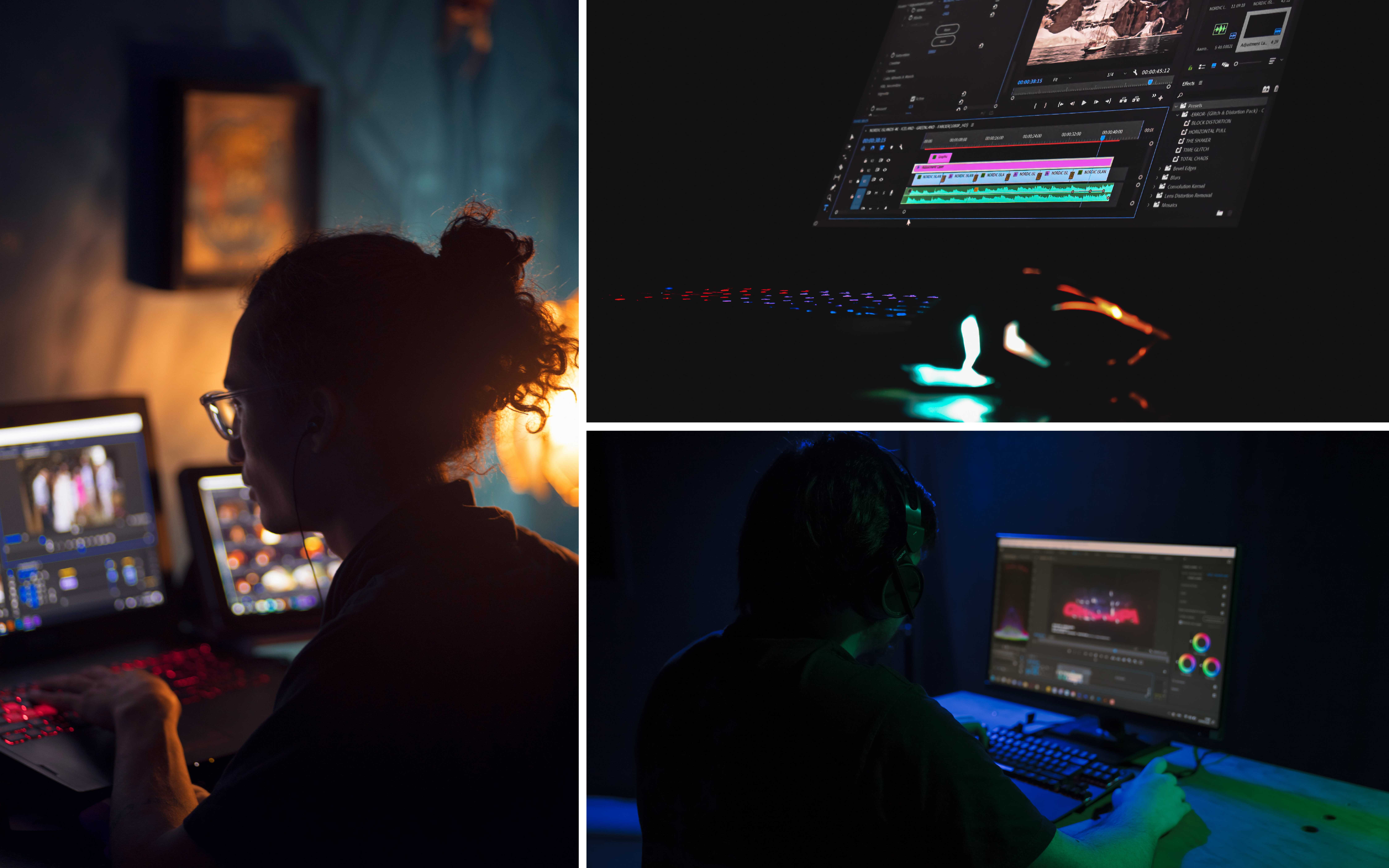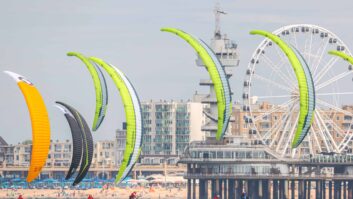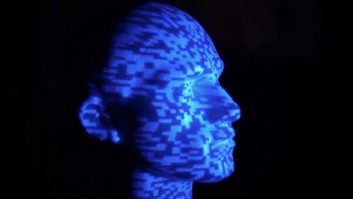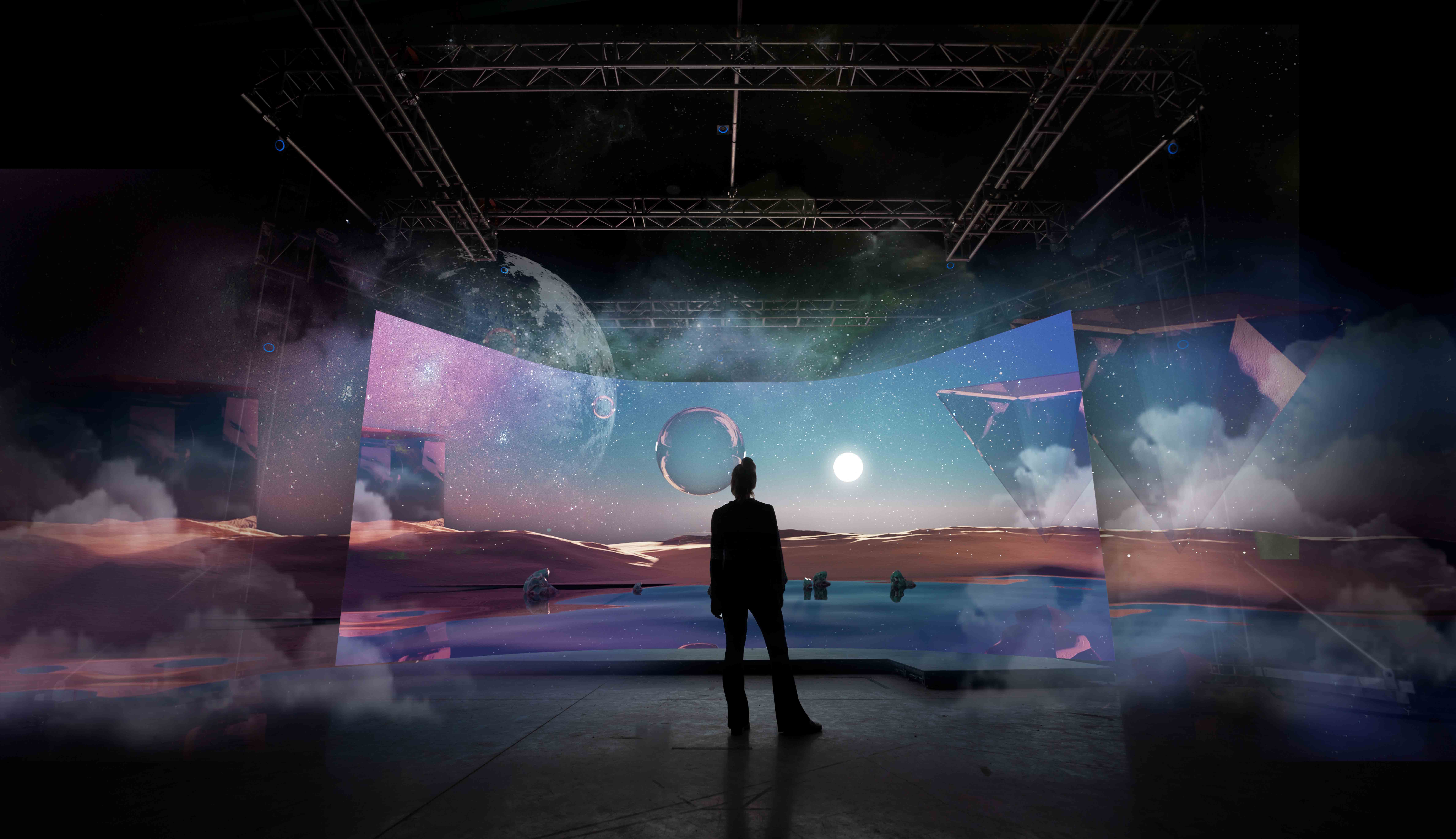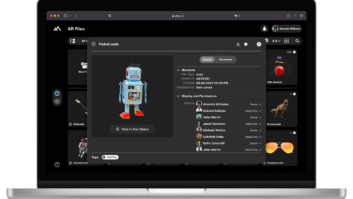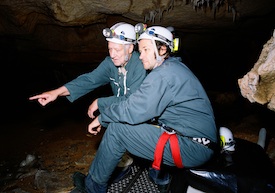
Werner Herzog’s forthcoming Cave of Forgotten Dreams was shot in arguably the most challenging conditions of any 3D project to date, writes Adrian Pennington.
The feature documentary, which is co-produced by History Films and Channel 4, has been shot virtually entirely in a cave in part using the flickering image of a flame from a Macbook to mimic conditions 35,000 years ago and also used stereo mini-cameras fitted to a remote controlled helicopter for some shots.
The rest of the picture’s production was pretty extraordinary too. The project was devised as conventional 2D with Herzog only taking the decision to shoot in stereo a week before filming began. This necessitated a rapid hire of available 3D equipment with the production eventually using SI-2k’s (hired from Silicon Imaging) mounted with Zeiss T1.4 SuperSpeeds and arrayed on mirror rigs from Jonathan Watts’ British Technical Films. Ronford Baker Bolt rigs with side by side configured cameras were also used.
Watt’s invention, a six rotor helicopter (hexicopter) called Skybot was configured for 3D aerial shots with a pair of $300 GoPro HD Digital cameras onboard. These shots were used for the opening sequence of the film.
The caves in France – which contain some of the best preserved prehistoric artwork in the world – suffer from 99% humidity and high levels of carbon dioxide and radon, making it impossible to work inside for more than a few hours a day. Filming within the site is in any case heavily restricted by the French government, forcing the production to shoot no more than four hours a day over a ten day period.
Only four crew were allowed inside the cave at any time – Herzog, cinematographer Peter Zeitlinger, stereographer Kaspar Callas and a technician or lighting cameraman. Because of the size of the passageways and to guard against damage to the cave walls, the equipment had to be dismantled, carried and rebuilt inside the cave for each session.
“Some of the paintings work like animations especially when viewed in the flickering light of a fire,” noted the project’s technical advisor, Dave Blackham of Esprit Films. “We couldn’t light live flame because of the risk to the art so we lit some scenes just with an image of a flame from a laptop screen. By using 3D in a subtle way it really added to the realism and captured the essence of the location.”
Footage was recorded to SI’s Minideck solid-state recorder with a Cineform codec and either viewed on the Minideck or transferred to a 1Beyond Wrangler Dude for on-set monitoring using the Wrangler’s viewer and its 3D monitoring tool set. The rushes were shipped to Light Iron Digital in Hollywood for online.
The extra $500,000 cost of the 3D production was underwritten by LA-based production company Creative Differences.
The feature gets a 3D theatrical release and a 2D transmission on C4 and the History Channel in 2011.
Photo of Werner Herzog & Peter Zeitlinger: Mark Valesella

